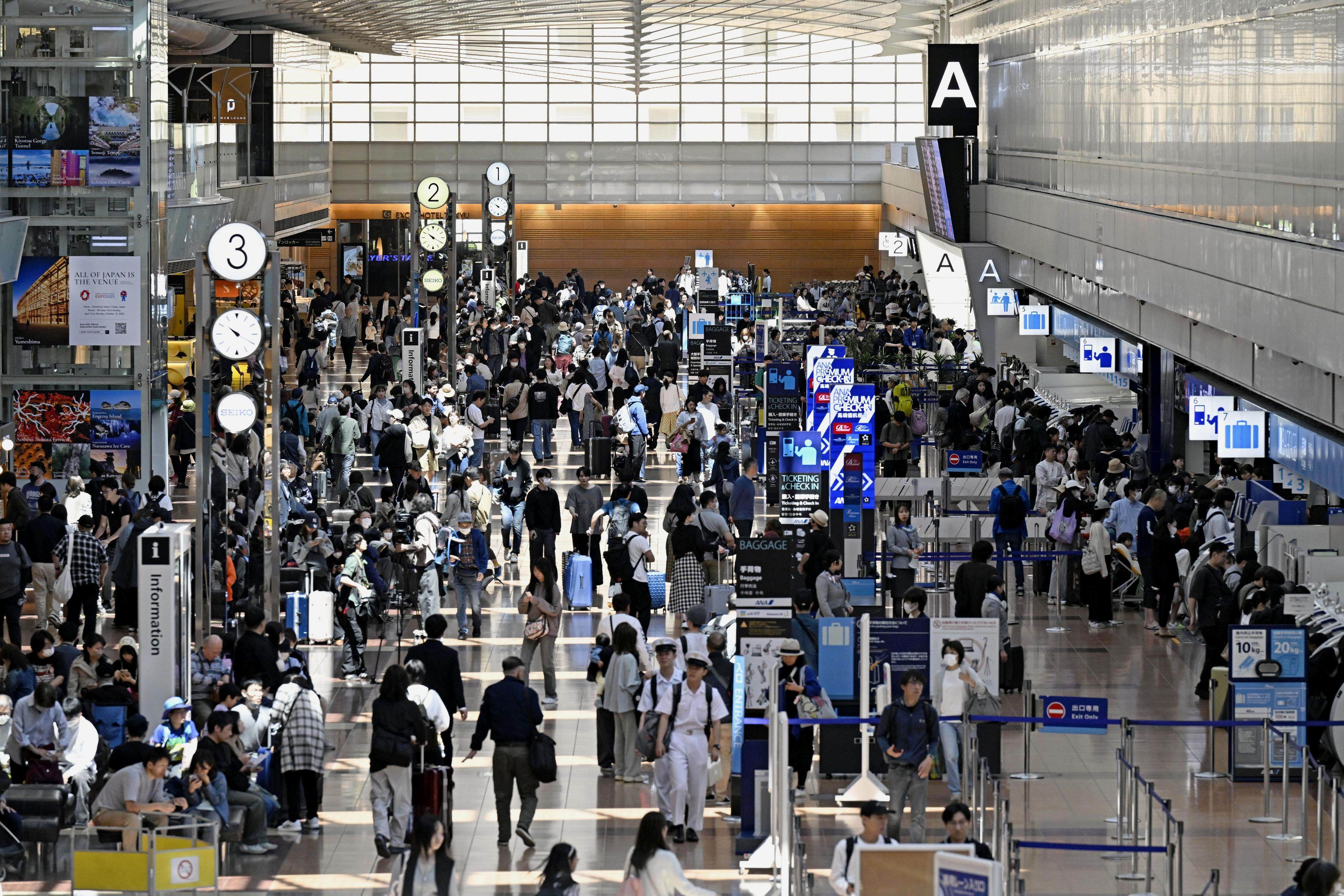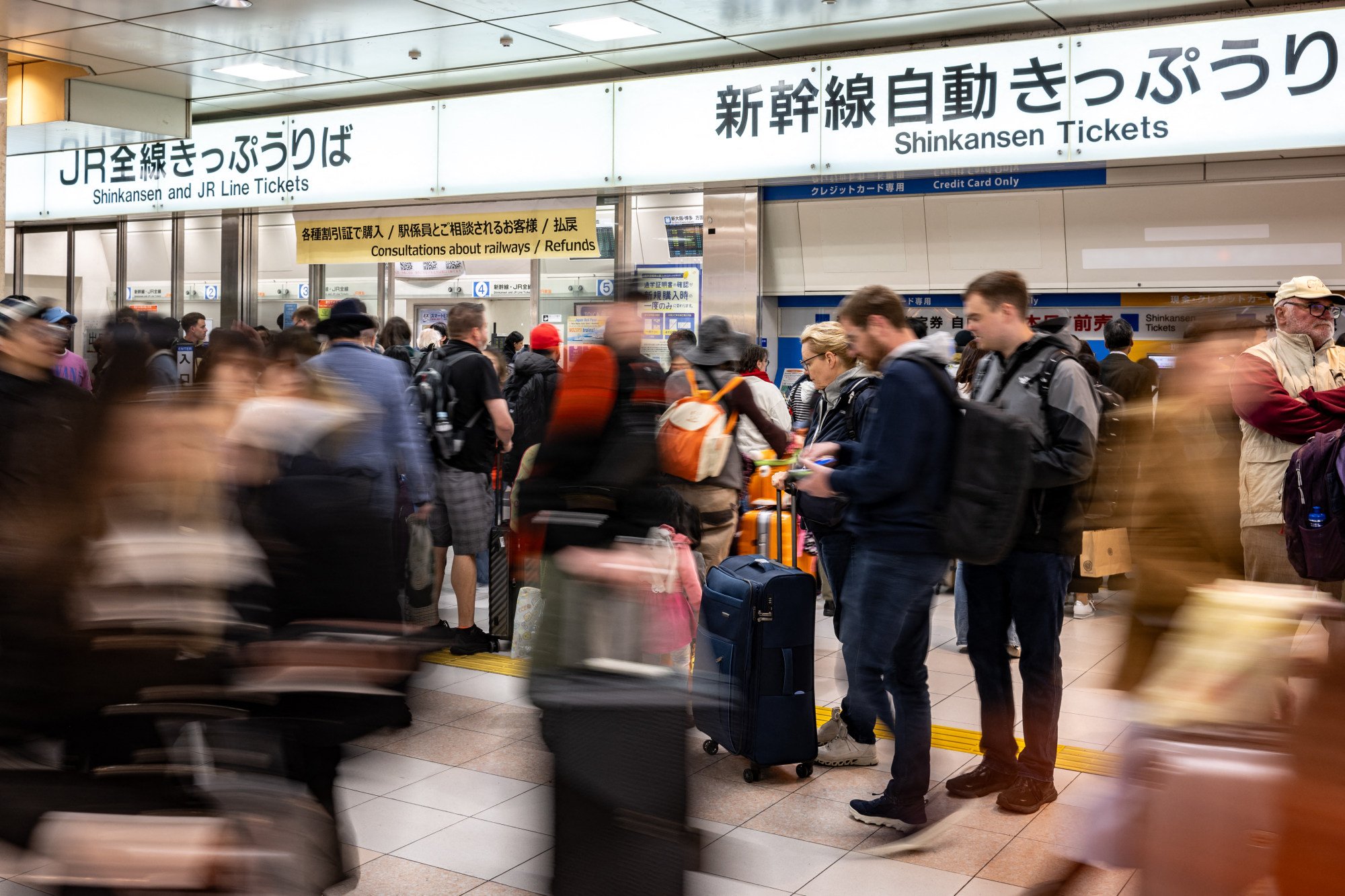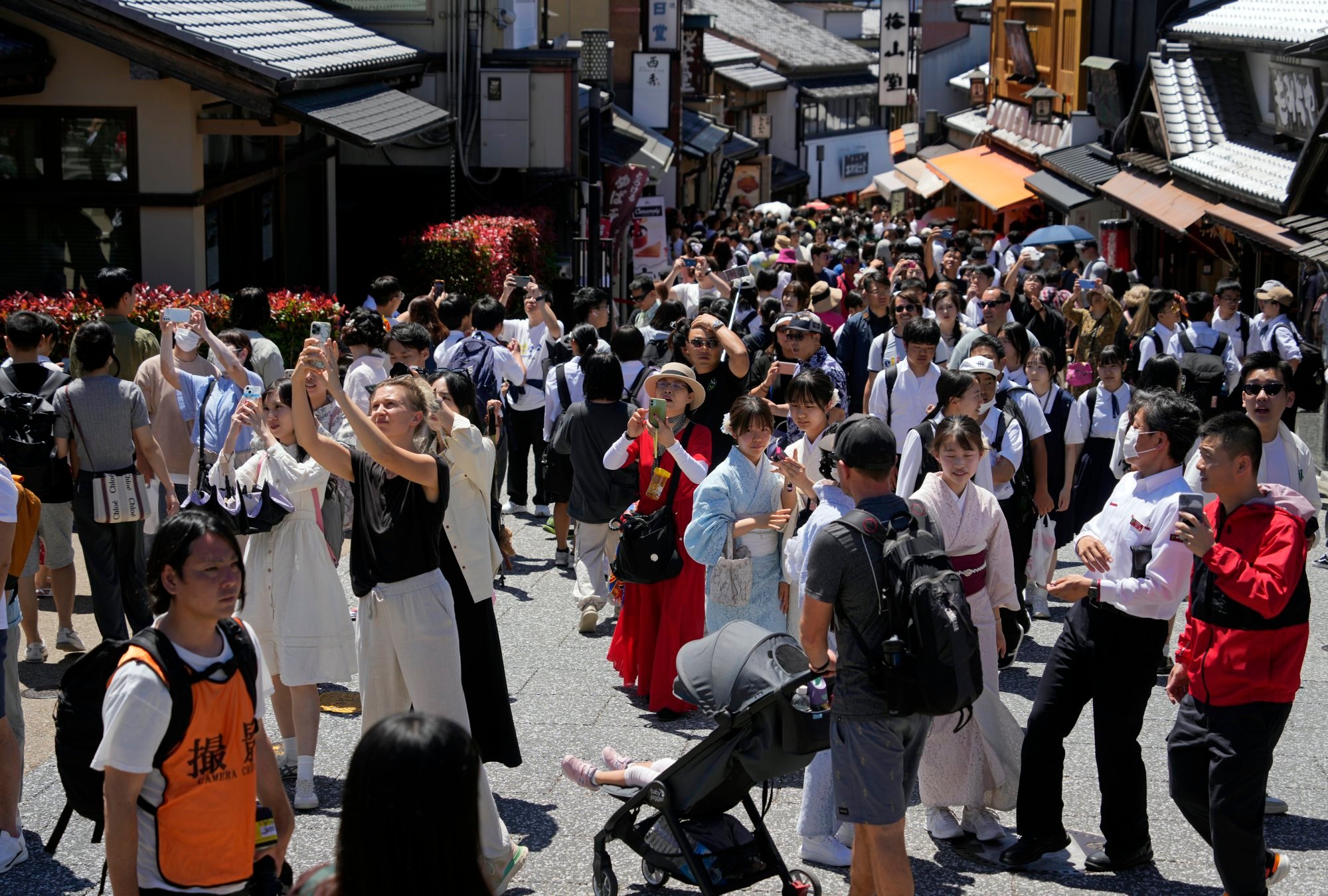‘Unprepared’ Japan struggles with airport chaos, bin shortages amid tourist boom
Japan’s airport bottlenecks show structural inefficiencies, with outdated procedures and overlapping bureaucracies hindering visitor influx, experts say

As Japan rides a wave of record-breaking tourist arrivals, foreign visitors are voicing growing frustrations over lengthy immigration queues, overcrowded attractions and a surprising lack of public rubbish bins – issues analysts say could hinder the nation’s goal of welcoming 60 million tourists a year by 2030.
A Japan Tourism Agency (JTA) survey found that while more than half of respondents had smooth travel experiences, many noted infrastructure and service issues at airports and tourist spots.
The findings come as preliminary data suggest Japan is on track to exceed 40 million overseas arrivals in 2025, up from a historic high of 36.9 million last year.
Travel sector experts say Japan’s airport bottlenecks reflect deeper structural inefficiencies, with overlapping bureaucracies and outdated procedures slowing the influx of visitors.
Japan is a long way behind Singapore and Dubai, where people can preregister and effectively walk straight through automated immigration proceduresAshley Harvey, travel marketing analyst
“Part of the problem is that the authorities still seem to be unprepared, despite the government’s targets and rising numbers of arrivals,” said Ashley Harvey, a travel marketing analyst who has worked in Japan’s travel sector for more than 15 years.
“Japan is a long way behind destinations such as Singapore and Dubai, where people can preregister and effectively walk straight through automated immigration procedures,” he told This Week in Asia.
At Japanese airports, passengers face a lengthy process of temperature checks, immigration, and customs. This process is outdated, likely because each procedure is overseen by different government ministries protecting their interests, Harvey said. “It is just entirely unnecessary.”
Authorities have confirmed “surges” of arrivals at several of Japan’s main international airports, with the Mainichi newspaper reporting that immigration staff at Tokyo’s Narita Airport felt “overwhelmed” and were unable to keep up, even at full staffing levels.
On May 5, the paper reported that flights were arriving on average every two minutes, which is about double the rate of 2024, and the line for immigration procedures was “moving at a snail’s pace”. With a queue of about 500 metres, some people waited up to two hours to be processed, longer than during the pandemic when extra health checks and paperwork were required.

Japan has separate booths for returning citizens and arriving tourists, but Japanese travellers move through quickly, while tourists wait in long queues, Harvey said.
“It’s frustrating because it is just poor planning. There is no flexibility built into the system here in Japan, and this is the result.”
Naomi Mano, president and CEO of high-end inbound travel firm Luxurique, believes part of the problem is a lack of government oversight.
“All the different airports are managed independently by quasi-government agencies, and they all have different ways of operating,” she said.
“I have just flown through Narita Airport, and they seemed to have their act together, but I cannot guarantee that will be the case when I next fly through Haneda Airport,” said Mano, who is also president of the Japan MICE Association, which focuses on business travellers.

And while it is good that the JTA is researching travellers’ complaints, she is not convinced that it will have a great deal of impact.
They’ll compile a report, outsource solutions, and create a budget before tackling the immediate problem, she said. “Even if they start now, it will take a minimum of three years for any improvements to appear.”
The JTA survey found that 8.6 per cent of respondents were frustrated by long immigration queues, while 15 per cent struggled with the language barrier. Additionally, 13.1 per cent expressed dissatisfaction with overcrowded tourist spots, and 21.9 per cent stated that Japan needed more rubbish bins in public areas.
Most bins were removed from railway station platforms in 1995 as a security measure in the aftermath of the Aum Shinrikyo cult releasing sarin gas, including from rubbish bins, on the Tokyo subway.
Mano, however, says the lack of bins is a cultural difference that many of her foreign clients quickly come to appreciate.
“A lot of visitors say that Tokyo and Kyoto are the cleanest cities they have ever visited,” she said. “In Japan, we take our waste home instead of leaving it for someone else to clear up. And when our guests realise that, they become more aware.
“I think that many foreigners who come to Japan also take that value away when they leave,” she said. “It is a good habit for each of us to be responsible for what we do.”